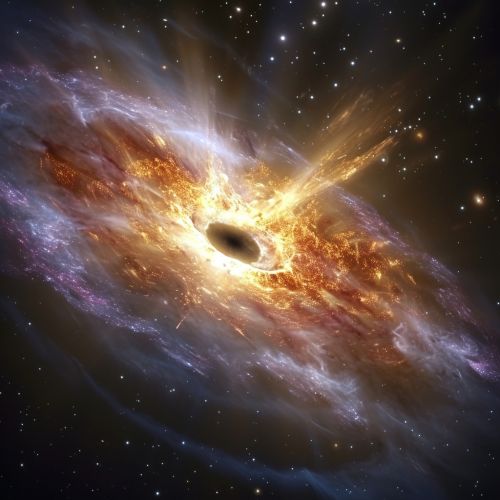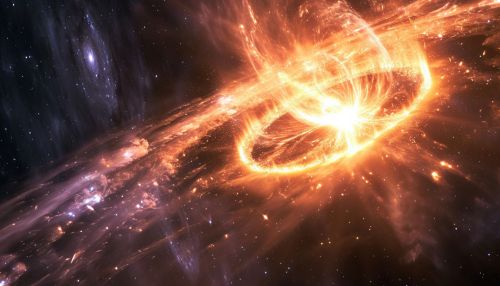Tidal Disruption
Introduction
A tidal disruption event (TDE) is a phenomenon that occurs when a star gets too close to a black hole and is torn apart by the black hole's tidal forces. This event results in a bright flare of electromagnetic radiation as the disrupted star's material is accreted onto the black hole. TDEs provide a unique opportunity to study the properties of black holes and the environments surrounding them.
Tidal Forces and Disruption
Tidal forces are a differential gravitational force that stretches an object along the line towards and away from the center of mass of another object. In the context of a Tidal Disruption Event, when a star approaches a black hole, the gravitational pull on the side of the star closest to the black hole becomes significantly stronger than the pull on the opposite side. This difference in gravitational forces stretches the star, eventually tearing it apart in a process known as spaghettification.


Observations and Detection
Tidal Disruption Events are typically detected through their bright, transient flares in optical, UV, and X-ray wavelengths. These flares can last from a few months to several years. Observations of these events provide valuable information about the black hole's mass and spin, as well as the structure and composition of the disrupted star.
Theoretical Models
Various theoretical models have been proposed to explain the physics of Tidal Disruption Events. These models aim to describe the dynamics of the star's disruption, the formation of an accretion disk around the black hole, and the subsequent emission of radiation. Theoretical models also predict certain observable characteristics of TDEs, such as the light curve and spectral properties, which can be compared with observations to test the models' validity.
Implications for Astrophysics
Tidal Disruption Events have significant implications for several areas of astrophysics. They provide a unique probe of the environments around black holes, including the accretion processes and the properties of the disrupted stars. TDEs also offer insights into the demographics of dormant black holes in the centers of galaxies, and they may contribute to our understanding of the growth and evolution of black holes.
